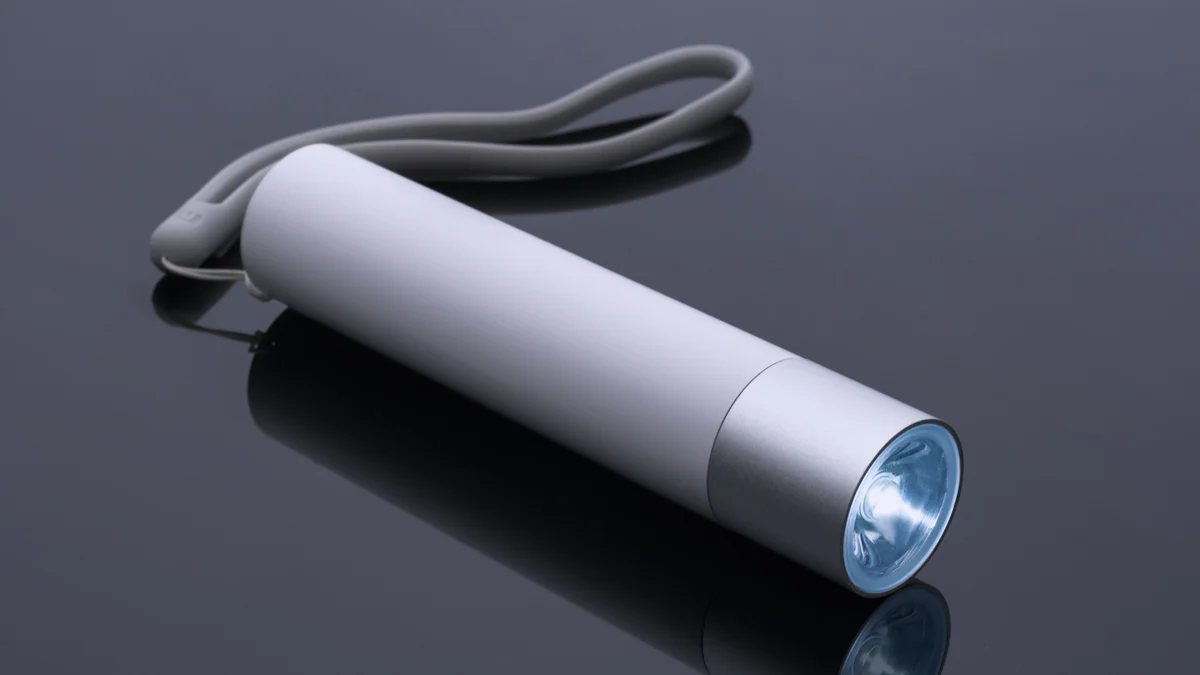Laser vs. Flashlight vs. LED Light: Unraveling the Contrasts

Exploring the Basics
Light sources play a crucial role in various aspects of our lives, from everyday tasks to advanced technological applications. In this section, we will delve into the fundamental concepts of lasers, flashlights, and LED lights to unravel their unique characteristics and functionalities.
What is a Laser?
The Science Behind Lasers
Laser technology has revolutionized numerous industries with its unique properties. Scientific research findings from "Laser Technology for Lighting Applications: A Review and Analysis of a Promising Technology" highlight that laser-based lighting can achieve high efficiency at high currents, surpassing traditional LED systems in terms of flux and efficiency. This demonstrates the potential for lasers to push the boundaries of solid-state lighting technology.
Common Misconceptions
There are common misconceptions surrounding lasers, often associated with their use solely in industrial or research settings. However, lasers have evolved to cater to diverse applications, including entertainment, precision tasks, and cutting-edge technological advancements.
Understanding Flashlights
The Evolution of Flashlights
Flashlights have undergone significant evolution over the years to meet high-performance and durability needs across residential and industrial sectors. Market projections indicate exceptional growth in the North American flashlight market, with a projected CAGR of 7.3% through 2034.
How Flashlights Work
Flashlights operate on simple yet effective principles. They provide portable illumination through the conversion of electrical energy into light. The global flashlight market is estimated to reach a value of US$ 3,525.6 million by 2034, reflecting substantial progress in this essential lighting tool.
The Lowdown on LED Lights
What Makes LEDs Different?
LEDs have transformed lighting solutions with their energy-efficient and versatile nature. According to "Light-emitting diode physics," researchers have made significant strides in improving LED efficiency by addressing outcoupling issues, leading to profound influences on light color production and control.
The Advantages of LED Technology
LEDs offer unparalleled advantages such as longer battery life and higher output efficiencies compared to traditional incandescent bulbs. The global LED flashlight market is expected to reach USD 532.4 million by the end of 2026, showcasing steady growth driven by advancements in LED technology.
The Difference Between a Laser and Other Light Sources
When comparing a laser to other light sources, particularly LED lights and flashlights, several key distinctions come to light.
Difference Between a Laser and an LED Light
Functionality and Output
LED lights are renowned for their energy efficiency and longevity, offering higher brightness levels and improved light quality compared to traditional incandescent bulbs. This makes them highly appealing to energy-conscious consumers seeking cost-effective and durable lighting solutions. On the other hand, lasers produce coherent light through optical amplification, resulting in a concentrated beam with unique properties such as high directionality and monochromaticity. This functionality makes lasers ideal for precision applications in various fields, including healthcare, manufacturing, and entertainment.
Color Range and Efficiency
LED lights boast a broad color range due to their ability to emit thousands of colors, providing versatile lighting options for both residential and commercial settings. Additionally, LEDs have made significant strides in addressing outcoupling issues, leading to improved efficiency in light color production and control. In contrast, lasers emit a single color of light due to their narrow bandwidth, making them suitable for specific applications where precise wavelength control is essential.
Difference Between a Laser and a Flashlight
Light Concentration and Usage
Flashlights are designed to provide portable illumination for various purposes, from everyday tasks to emergency situations. They offer broader illumination with adjustable focus settings, catering to diverse usage scenarios. Conversely, lasers produce highly concentrated beams that are well-suited for tasks requiring pinpoint accuracy or long-range projection.
Battery Life and Durability
LED flashlights consume less power while delivering brighter illumination compared to traditional incandescent bulbs. This enhanced energy efficiency translates into longer battery life, making LED flashlights an ideal choice for extended use in outdoor activities or emergency situations. In contrast, laser devices typically require more power due to their concentrated output but offer exceptional durability when engineered for specific applications.
Practical Uses and Applications

Now that we have explored the fundamental differences between lasers, flashlights, and LED lights, it's essential to understand their practical uses and applications in various settings.
When to Use a Laser
Precision Tasks and Entertainment: Lasers are indispensable in precision tasks such as surgical procedures, scientific research, and industrial manufacturing. Their ability to produce a concentrated beam of light makes them invaluable for intricate operations where accuracy is paramount. Moreover, lasers have found extensive use in entertainment, contributing to captivating laser light shows and immersive visual experiences.
Educational and Professional Settings: In educational environments, lasers serve as powerful tools for conducting experiments and demonstrations across disciplines such as physics, chemistry, and engineering. Additionally, in professional settings, lasers are employed for cutting-edge applications in fields like telecommunications, spectroscopy, and holography.
Flashlights: A Must-Have Tool
Emergency Situations and Everyday Use: Flashlights are essential tools for navigating through power outages, natural disasters, or any low-light conditions. Their portable nature makes them indispensable for everyday tasks such as finding lost items or inspecting dark spaces.
Outdoor Adventures and Safety: Whether camping in the wilderness or embarking on nighttime outdoor activities, flashlights provide reliable illumination for safe navigation and emergency signaling. They are also crucial for enhancing visibility during evening walks or runs.
LED Lights: Lighting Up the Future
Home and Commercial Lighting: The versatility of LED lights makes them ideal for illuminating residential spaces with energy-efficient solutions. Furthermore, their long lifespan and low maintenance requirements make them cost-effective options for commercial lighting applications in offices, retail establishments, and public facilities.
Innovative Applications in Technology: LEDs continue to drive innovations across various technological domains including automotive lighting systems, digital displays, horticultural lighting solutions, and wearable technology. Their adaptability and efficiency position them as integral components in shaping the future of diverse industries.
Making the Right Choice for Your Needs
Considering Your Lighting Needs
When evaluating your lighting needs, it's essential to consider several factors to make an informed decision that aligns with your requirements.
Questions to Ask Yourself
What is the primary purpose of the lighting? Understanding whether you need lighting for precision tasks, everyday use, emergency situations, or specific applications will guide your choice between a laser, flashlight, or LED light.
How important is energy efficiency and battery life? Assessing the significance of energy conservation and prolonged battery performance will influence your decision, especially if you prioritize sustainable and cost-effective lighting solutions.
Do you require versatile color options? If color range and flexibility are crucial for your intended use, LED lights may be the most suitable option due to their ability to emit thousands of colors.
What level of durability is necessary? Considering the environmental conditions and potential wear-and-tear on the lighting device will help determine whether a laser, flashlight, or LED light best meets your durability requirements.
Comparing Costs and Benefits
When weighing the costs and benefits of different lighting options, it's important to assess not only the initial investment but also long-term advantages. While lasers may offer unparalleled precision and unique functionalities, LED lights provide energy-efficient solutions with extended lifespans. Flashlights strike a balance between portability and illumination intensity, making them versatile tools for various scenarios.
My Personal Experience and Recommendations
In my experience with using all three types of lighting sources, I've found that each serves distinct purposes based on specific needs. LED lights have been my go-to choice for everyday use due to their energy efficiency and versatility in residential settings. On the other hand, flashlights have proven indispensable during outdoor adventures and emergency situations where reliable illumination is paramount. As for lasers, their precision capabilities have been invaluable in professional settings requiring pinpoint accuracy.
Final Thoughts and Advice
When selecting a lighting source, it's crucial to prioritize functionality over novelty. Consider your practical needs first before delving into advanced features. Additionally, always prioritize safety when using lasers due to their concentrated beams. Ultimately, understanding your unique requirements will lead you to make an informed decision that aligns with your specific needs.
2024/4/28
See Also
Which is the Superior Flashlight: Police vs Regular?
Exploring Various Flashlight Varieties
Hunting: Green Light vs White Light Flashlights Compared
Choosing the Right Option: Zoomable Flashlight vs Reflector Cap
